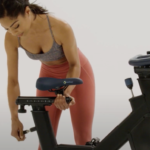Fitness Gloves: The Ultimate Workout Companion
Fitness gloves have evolved from simple cotton coverings to sophisticated pieces of workout equipment, offering a range of benefits for athletes of all levels. Understanding the nuances of these gloves – from materials to features to proper fit – is crucial to maximizing their potential and enhancing your workout experience.
The Science of Grip and Protection:
The primary function of fitness gloves is to enhance grip. This is particularly important during exercises like weightlifting, pull-ups, and calisthenics, where a secure hold is paramount for preventing injury and maximizing performance. The materials used directly impact grip performance. Popular choices include:
-
Leather: Renowned for its durability and breathability, leather gloves offer excellent grip, especially when slightly worn in. However, they require more maintenance and can be more expensive than synthetic alternatives. Full-grain leather is the highest quality, offering superior durability and resistance to wear.
-
Synthetic Leather (PU Leather): A more affordable and often more lightweight option, synthetic leather provides good grip and is relatively easy to clean. However, it may not be as durable as genuine leather and can degrade faster with prolonged use. The quality of synthetic leather varies significantly across brands, so careful selection is necessary.
-
Neoprene: Offering superior cushioning and compression, neoprene gloves are ideal for high-impact activities and protect the hands from abrasions. However, they can be less breathable than leather or synthetic alternatives and may not provide the same level of grip in very sweaty conditions.
-
Nylon and Spandex blends: Often used for lighter training or general fitness activities, these materials offer flexibility and breathability but may compromise on grip and protection compared to leather or neoprene options.
Beyond the material, the design elements also influence grip. Features like padded palms and strategically placed silicone grips significantly enhance the hold on weights, bars, and other workout equipment. The presence of gel padding further reduces hand fatigue and minimizes the impact on joints.
Protection Beyond Grip:
Fitness gloves offer a crucial layer of protection against various injuries:
-
Calluses and Blisters: Repeated friction from weightlifting bars and other equipment can lead to calluses and blisters. Gloves provide a buffer, reducing friction and minimizing the risk of these painful conditions.
-
Wrist Injuries: Many fitness gloves incorporate wrist wraps or straps, providing additional support and stability to the wrist joint. This is particularly beneficial during heavy lifting, protecting against sprains and strains.
-
Hand Injuries: Gloves can help prevent minor cuts and abrasions that can occur during training. This is especially relevant in activities involving rough surfaces or equipment.
Choosing the Right Fitness Gloves:
Selecting the appropriate gloves requires considering several factors:
-
Activity Type: The type of workout significantly influences the glove selection. Weightlifting requires robust gloves with strong grip and wrist support, while calisthenics may benefit from more breathable, lightweight options. For high-impact activities like CrossFit, gloves with superior cushioning and impact absorption are essential.
-
Hand Size and Fit: Proper fit is paramount. Gloves that are too tight restrict blood flow and limit dexterity, while gloves that are too loose offer inadequate support and can slip during exercises. Most brands offer a range of sizes to accommodate different hand sizes.
-
Material Preference: Consider personal preferences regarding breathability, durability, and cost when selecting the material. Leather offers exceptional durability but requires more maintenance, while synthetic leather provides a more affordable alternative.
-
Features: Assess the need for features like wrist wraps, padded palms, fingerless designs (for increased dexterity), and touchscreen compatibility. These features enhance the functionality and versatility of the gloves.
-
Budget: Fitness gloves are available across a wide price range. Determine a reasonable budget that aligns with the desired quality and features.
Maintenance and Care:
Proper maintenance extends the lifespan of your fitness gloves and ensures optimal performance. Leather gloves require regular cleaning and conditioning to maintain their flexibility and prevent cracking. Synthetic leather gloves can typically be wiped clean with a damp cloth. Always allow gloves to air dry completely after use to prevent the growth of bacteria and mildew.
Beyond the Basics: Specialized Gloves
The market offers specialized fitness gloves designed for particular activities:
-
Weightlifting Gloves: These emphasize wrist support, padded palms, and durable materials for heavy lifting.
-
CrossFit Gloves: Often feature robust construction, superior cushioning, and breathability to withstand the diverse demands of CrossFit training.
-
Gymnastics Gloves: Prioritize grip and dexterity, often with minimal padding.
-
Cycling Gloves: Focus on shock absorption, padding, and breathability. They often incorporate gel padding for enhanced comfort on long rides.
Understanding the various types of fitness gloves, their features, and how to choose the right pair is crucial for maximizing workout performance and minimizing the risk of injury. Investing in high-quality gloves is an investment in your overall fitness journey.





